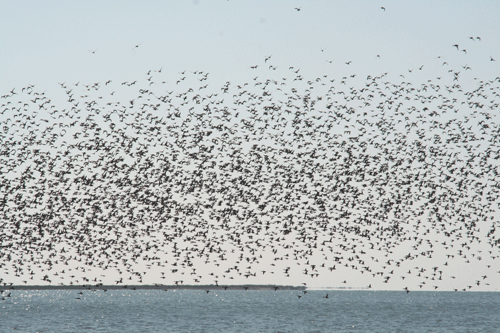It might seem a little bit odd to talk duck hunting in July, but a recent report from the U.S. Fish and Wildlife Service indicates that we’re heading into a November season opener with high expectations.
Something duck hunters can look forward to is another banner teal season in September. Both blue and green winged teal numbers are through the ceiling, so I don’t see any reason why the feds would not give us a September season with liberal limits. Green-winged teal numbers are at 4.1 million, which is 19 percent above the 2014 estimate and 98 percent above the long-term average. The blue-winged teal population is right at 8.5 million, which is similar to the 2014 estimate and 73 percent above the long-term average.
The only negative in the latest report from the USFWS is that pintails are 24 percent below the long-term average. Field studies show that there are roughly 3 million pintails which is similar to the 2014 estimates.
The report shows that duck numbers in the survey area are statistically similar to last year and remain strong. Total populations were estimated at 49.5 million breeding ducks in the traditional survey area, which is 51 percent above the 1955-2014 long-term average and the highest count on record. Last year’s estimate was 49.2 million birds.
The main determining factor for duck breeding success is wetland and upland habitat conditions in the key breeding areas of the prairies. Conditions observed across the U.S. and Canadian survey areas during the 2015 breeding population survey were drier than last year. Total pond counts for the U.S. and Canada combined were 6.3 million, which is 12 percent below the 2014 estimate of 7.2 million and 21 percent above the long-term average, according to Eric Keszler, with the USFWS.
“The spring surveys provide the scientific basis for many management programs across the continent, including hunting season dates and bag limits,” says Keszler. “The four flyway councils and the U.S. Fish and Wildlife Service Regulations Committee will meet in late July to recommend the season structure and bag limits for 2015-16. Individual states will make their specific selections within a federal framework of season length, bag limits and dates.”
Species estimates are as follows:
Mallards – 11.6 million, which is similar to the 2014 estimate and 51 percent above the long-term average.
Gadwall – 3.8 million, which is similar to the 2014 estimate and 100 percent above the long-term average.
American wigeon – 3.0 million, which is similar to the 2014 estimate and 17 percent above the long-term average.
Northern shovelers – 4.4 million, which is 17 percent below the 2014 estimate and 75 percent above the long-term average.
Redheads – 1.2 million, which is similar to their 2014 estimate and 71 percent above the long-term average.
Canvasbacks – 0.76 million, which is similar to the 2014 estimate and 30 percent above the long-term average.
Scaup – 4.4 million, which is similar to the 2014 estimate and 13 percent below the long-term average.
Black ducks – 541,000, which is 11 percent below the 2014 estimate and 13 percent below the long-term average.
Excellent trout and redfish numbers over sand and grass
Fishing for trout and reds with topwater plugs and soft plastics has been outstanding the past few weeks. During the first week of July we were catching easy limits of reds on Super Spook Jr.’s in spectrum and bone colors. Once the topwater bite plays out a white/chartreuse Money Minnow was the ticket in 3 to 4 feet of water.
Trout are excellent over sand and grass in 3 to 4 feet of water with croakers fished on Carolina rigs or under rattle floats. Incoming tides are holding good numbers of trout to 4 pounds.
For duck hunting and fishing trips call Capt. Robert Sloan at 409 782 6796, email at sloan288@aol.com or check out our web site at www.luckystrikeguide.com.

